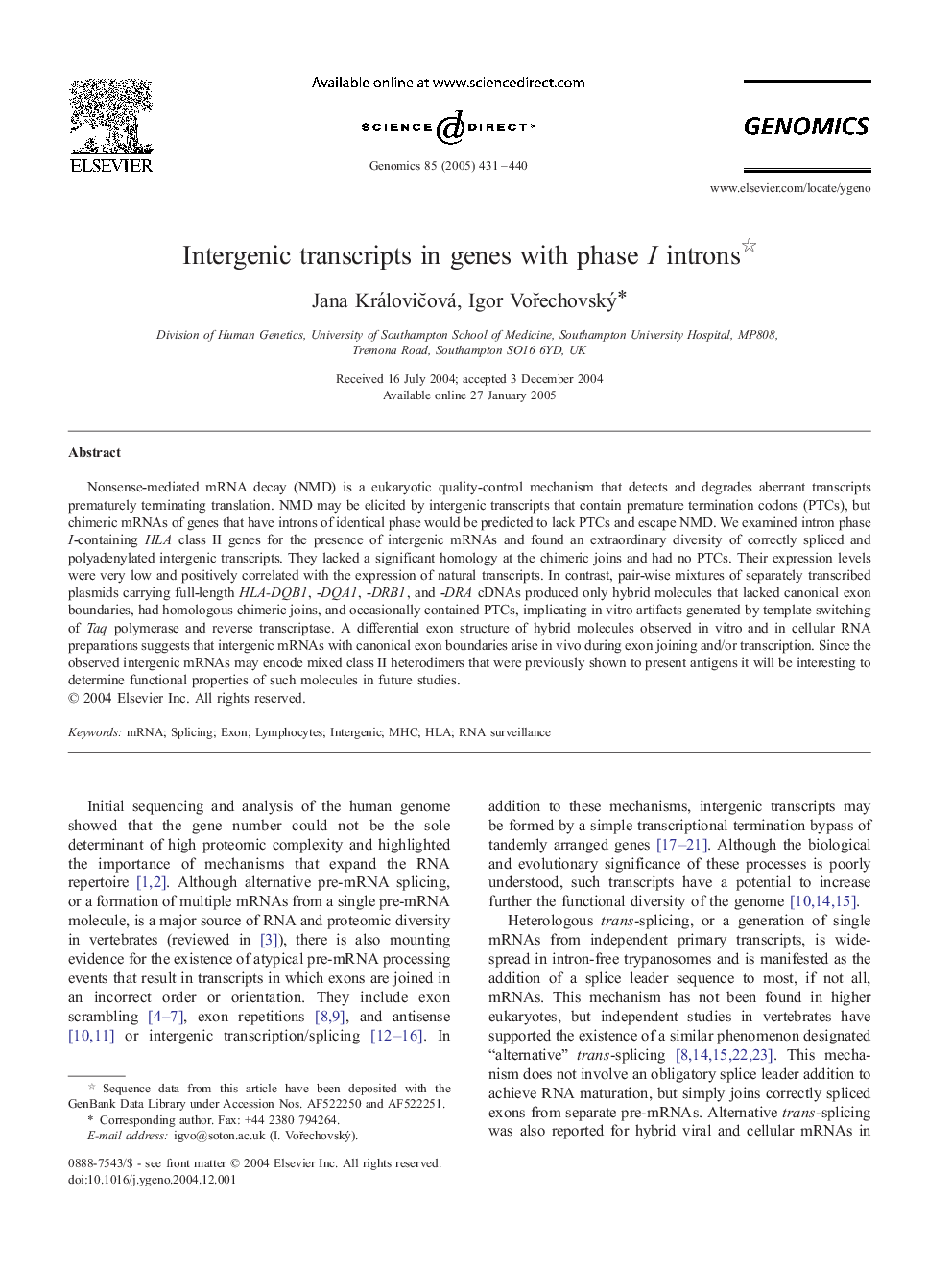| Article ID | Journal | Published Year | Pages | File Type |
|---|---|---|---|---|
| 9131965 | Genomics | 2005 | 10 Pages |
Abstract
Nonsense-mediated mRNA decay (NMD) is a eukaryotic quality-control mechanism that detects and degrades aberrant transcripts prematurely terminating translation. NMD may be elicited by intergenic transcripts that contain premature termination codons (PTCs), but chimeric mRNAs of genes that have introns of identical phase would be predicted to lack PTCs and escape NMD. We examined intron phase I-containing HLA class II genes for the presence of intergenic mRNAs and found an extraordinary diversity of correctly spliced and polyadenylated intergenic transcripts. They lacked a significant homology at the chimeric joins and had no PTCs. Their expression levels were very low and positively correlated with the expression of natural transcripts. In contrast, pair-wise mixtures of separately transcribed plasmids carrying full-length HLA-DQB1, -DQA1, -DRB1, and -DRA cDNAs produced only hybrid molecules that lacked canonical exon boundaries, had homologous chimeric joins, and occasionally contained PTCs, implicating in vitro artifacts generated by template switching of Taq polymerase and reverse transcriptase. A differential exon structure of hybrid molecules observed in vitro and in cellular RNA preparations suggests that intergenic mRNAs with canonical exon boundaries arise in vivo during exon joining and/or transcription. Since the observed intergenic mRNAs may encode mixed class II heterodimers that were previously shown to present antigens it will be interesting to determine functional properties of such molecules in future studies.
Related Topics
Life Sciences
Biochemistry, Genetics and Molecular Biology
Genetics
Authors
Jana KrálovicËová, Igor VorËechovský,
